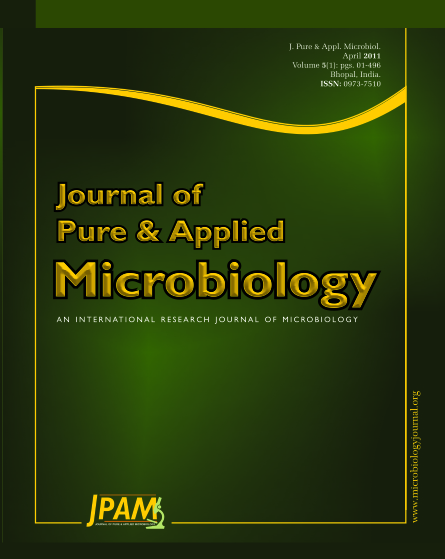The present study was designed to a systematic screening for the potential isolates of Penicillium chrysogenum strains from the marsh soils of Tamilnadu and their antibacterial efficacy by strain improvement. In the present study, antimicrobial tests were conducted for seven species of bacteria (Staphylococcus aureus, Streptococcus pneumoniae, Bacillus subtilis, Pseudomonas aeurginosa, Salmonella typhii, Escherichia coli and Klebsiella pneumoniae) and found all are susceptible for penicillin produced by the three isolated strains of P. chrysogenum (MPPS1, MPPS2 and MPPS3), under control, NTG treated and UV irradiated conditions. The mean zone diameter for Staphylococcus aureus was ranging from 16.20 ± 0.35mm to 20.30±0.45mm in the control, from 19.32±1.17mm to 21.20±0.45mm in the NTG treated cultures and from 18.20±0.22mm to 21.20±0.45mm in the UV treated culture. The susceptibility range of Streptococcus pneumoniae was between 10.22±0.35mm and 15.43±0.39mm in the control, 14.40±0.65mm and 17.80±0.39mm in the NTG treated strains and 13.12±1.17mm and 15.36±1.17mm in the UV treated cultures. Larger inhibition zones were observed for Bacillus subtilis, (16.36±0.39mm to 22.00±0.40mm) in the NTG treated cultures followed by UV radiated strains (14.10±0.65mm to20.20±0.39mm). The maximum diameter of inhibition zone was recorded for Pseudomonas aeruginosa with the UV treated P. chrysogenum MPPS2 strains (11.21±0.22mm). Salmonella typhii was found more susceptible to P. chrysogenum MPPS2 strain treated with NTG (14.30±0.17mm) followed by the same strain, treated with UV radiation (13.30±1.17mm). A low susceptibility rate was observed for E.coli in all the antimicrobial effect experiments. Higher susceptibility rates were recorded for Klebsiella pneumoniae with all the 3 strains of P. chrysogenum treated with NTG (P.chrysogenum MPPS1: 9.40±0.72mm;MPPS2: 12.10±0.50mm;MPPS3: 6.30±0.39mm).
Penicillium chrysogenum, UV Irradiated, NTG, Antibacterial efficacy
© The Author(s) 2011. Open Access. This article is distributed under the terms of the Creative Commons Attribution 4.0 International License which permits unrestricted use, sharing, distribution, and reproduction in any medium, provided you give appropriate credit to the original author(s) and the source, provide a link to the Creative Commons license, and indicate if changes were made.


